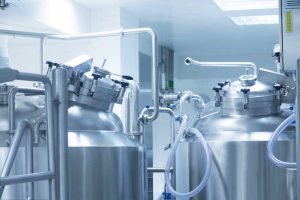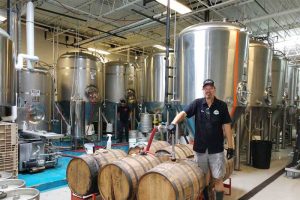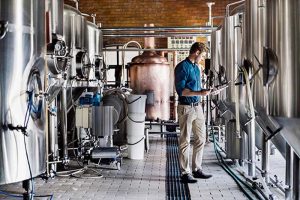
How to choose a beer filling system?
One of the most important decisions a brewery can make is choosing the right equipment to fill their beer bottles or cans. There are many different types of beer filling equipment available, each with its own advantages and disadvantages. In this guide, we’ll explore the different types of beer filling equipment and the factors to

How do brewers control the temperature during fermentation?
Temperature control is a critical aspect of the brewing process, especially during fermentation. Proper temperature management ensures optimal yeast activity, promotes desirable flavor development, and prevents off-flavors or stuck fermentations. In this article, we will explore the importance of temperature control during fermentation and discuss the methods brewers employ to maintain precise and consistent temperatures.

Daily maintenance of chiller in craft beer equipment
Craft beer equipment requires a lot of cooling in the brewhouse and fermentation process to meet the needs of the process. The brewhouse process is to cool the wort to the temperature required for yeast reproduction. The main purpose of the fermentation process is to keep the temperature in the tank constant, and use ethylene glycol water

What are the advantages and disadvantages of using different types of fermenters?
Fermentation is a critical step in the brewing process that turns wort into beer. There are several different types of fermenters, each with its own advantages and disadvantages. In this article, we’ll take a closer look at the different types of fermenters and their pros and cons.

800L brewing equipment sent to the United States
800l equipment is used in microbreweries, bars, brewpubs, etc., and can be used to brew various types of beer such as ale or lager.

What is the difference between a two-vessel and three-vessel brewhouse?
Two of the most common types of brewhouses are the two-vessel and three-vessel brewhouse. In this article, we’ll explore the differences between these two brewhouses and help you decide which one is right for your brewery.

How do you troubleshoot common problems with brewery equipment?
Brewery equipment is an essential aspect of any brewing process, whether you are a homebrewer or run a commercial brewery.In this article, we will discuss some of the most common problems with brewery equipment and how to troubleshoot them.

what does hops do ?
If you know about brewing during beer preparation, you know about hops. These flowers are used to impart flavor and taste to the beer.

What is the cooling system in a brewery?
Throughout the centuries, brewing has evolved, and with the development of modern technology, breweries today have sophisticated equipment that enables them to produce high-quality beer on a large scale. One of the most critical components of modern brewing equipment is the cooling system.

7bbl brewery equipment ready to ship to Canada
The 7BBL brewing equipment made for the client has been completed. Ready to ship to Canada.
Learn more about winemaking
If you want to learn more about winemaking, you can subscribe to our blog for updates. We will update the blog every week so that you can learn more about winemaking.
